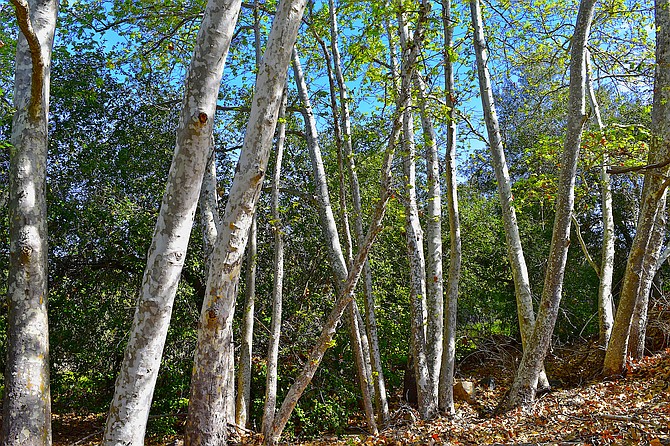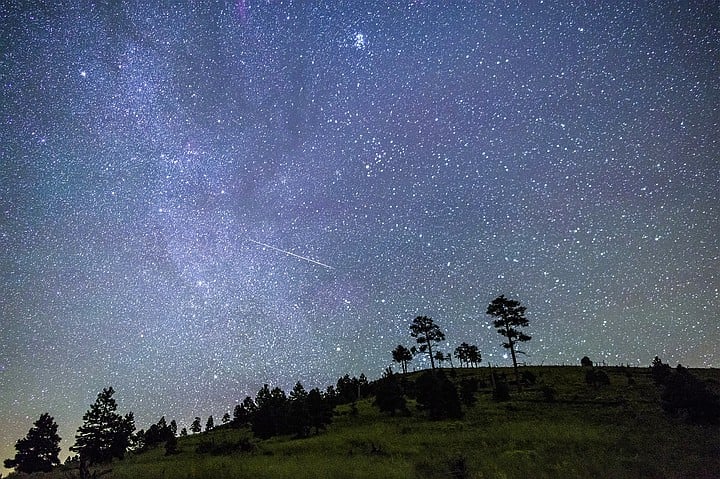 Facebook
Facebook
 X
X
 Instagram
Instagram
 TikTok
TikTok
 Youtube
Youtube

With More Sunshine And Warmer Temperatures Lately, sycamore, liquidambar, and other decorative deciduous trees around San Diego have responded with tender bright-green foliage. Cruise down 163 through Balboa Park to appreciate the vernal splendor of the sycamores growing in the landscaped center divider. Or walk across the arched El Prado bridge and look down upon the same.

Bracken Ferns Are Rising On The Higher Mountains of San Diego County, their bright green, unfolding fronds (called “fiddleheads”) pushing up through the russet remains of last year’s growth. Look for waist-high bracken fern along the creeks and hollows of the Palomar, Cuyamaca, and Laguna mountains.

The Annual Lyrid Meteor Shower occurs this year during the early morning hours of April 21-22. This is a relatively minor meteor shower with an average of only 10 meteors per hour. Further, this year’s Lyrid shower will probably be spoiled by the glare of the nearly full moon. Try watching in the early morning of the 23rd after the Moon has set and before the sun rises. The shower will be in the South. You can see April’s full Moon on Tuesday, April 23. Traditionally, it is called the Pink Moon, and it typically symbolizes the beginning of spring.


With More Sunshine And Warmer Temperatures Lately, sycamore, liquidambar, and other decorative deciduous trees around San Diego have responded with tender bright-green foliage. Cruise down 163 through Balboa Park to appreciate the vernal splendor of the sycamores growing in the landscaped center divider. Or walk across the arched El Prado bridge and look down upon the same.

Bracken Ferns Are Rising On The Higher Mountains of San Diego County, their bright green, unfolding fronds (called “fiddleheads”) pushing up through the russet remains of last year’s growth. Look for waist-high bracken fern along the creeks and hollows of the Palomar, Cuyamaca, and Laguna mountains.

The Annual Lyrid Meteor Shower occurs this year during the early morning hours of April 21-22. This is a relatively minor meteor shower with an average of only 10 meteors per hour. Further, this year’s Lyrid shower will probably be spoiled by the glare of the nearly full moon. Try watching in the early morning of the 23rd after the Moon has set and before the sun rises. The shower will be in the South. You can see April’s full Moon on Tuesday, April 23. Traditionally, it is called the Pink Moon, and it typically symbolizes the beginning of spring.
Comments